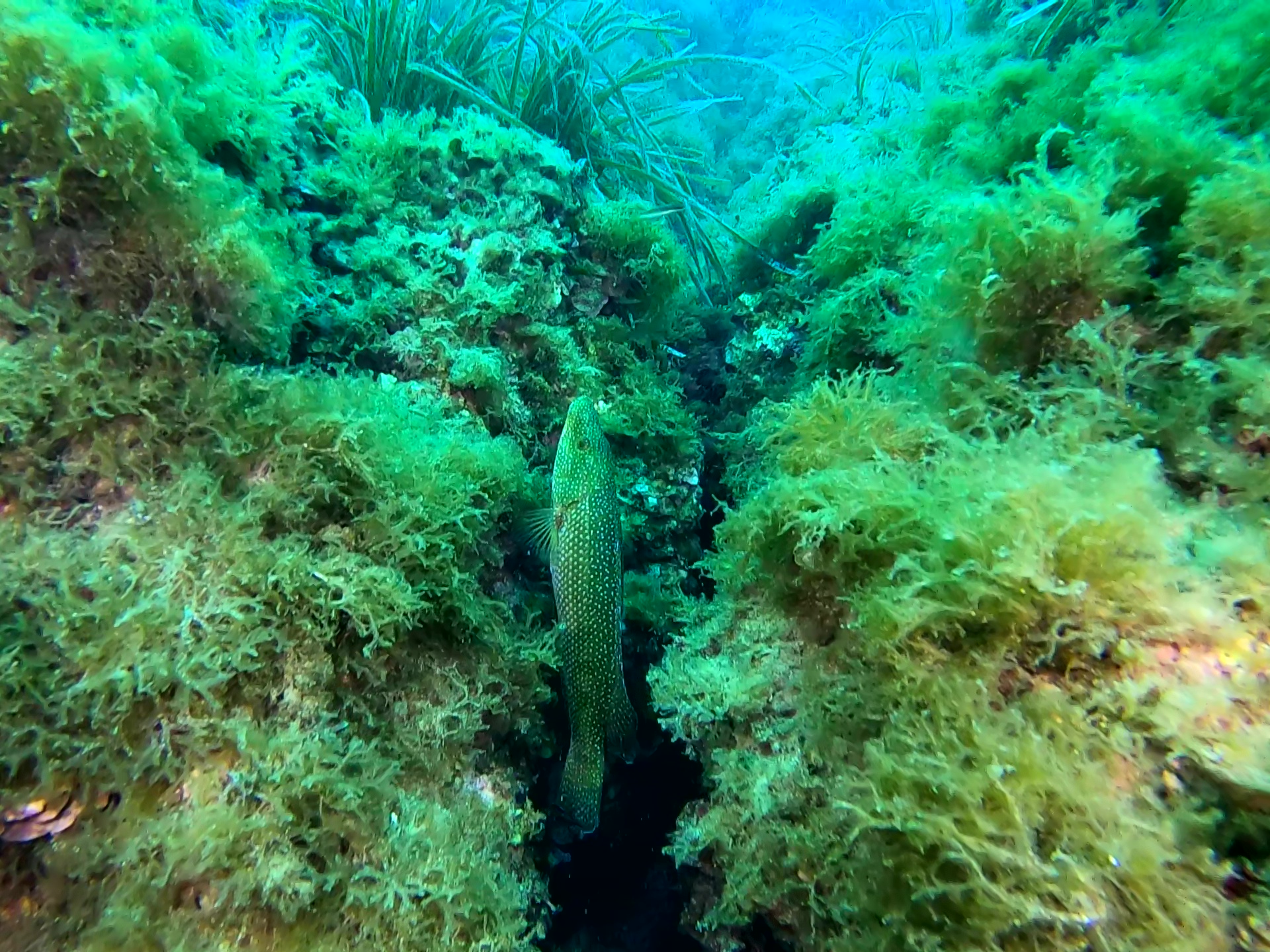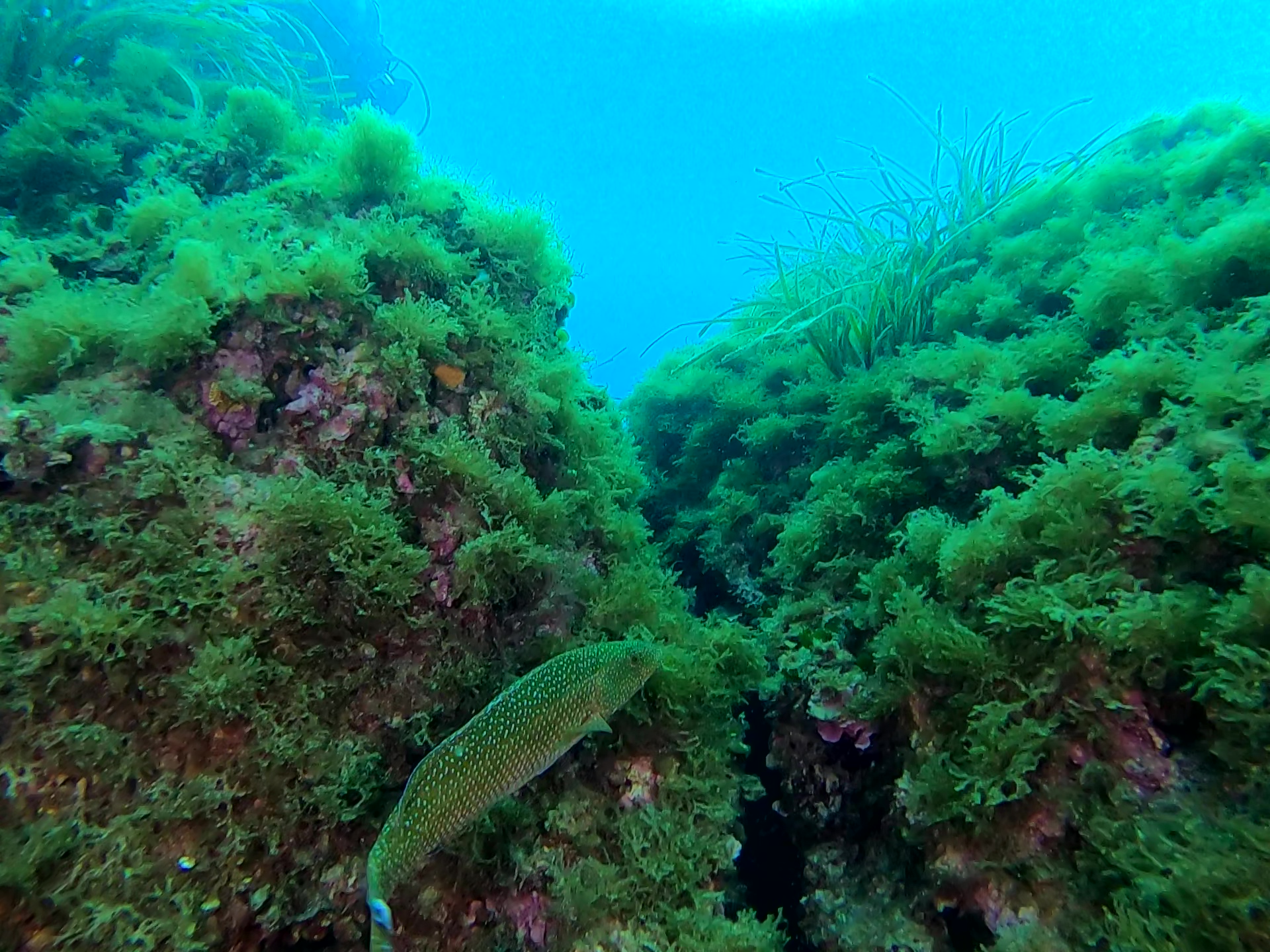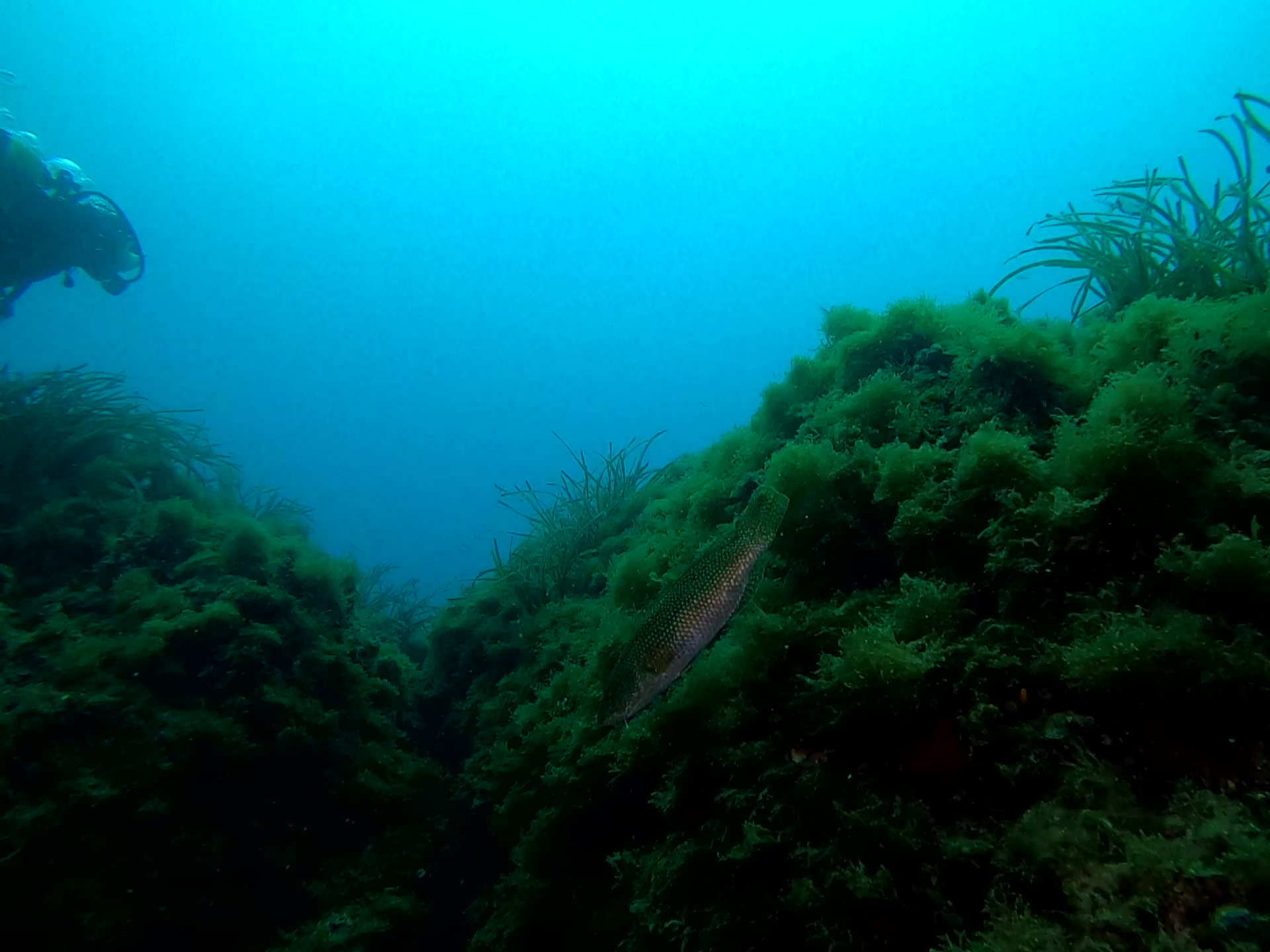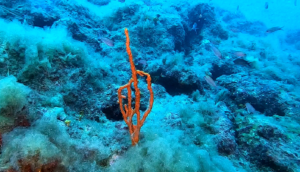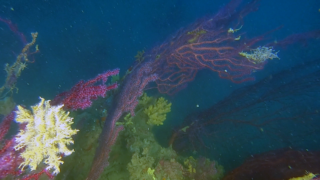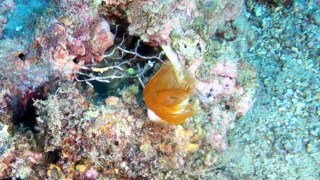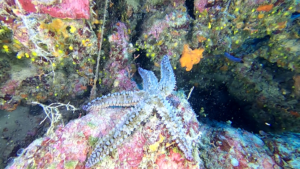Gren wrasse is one of the most common wrasse in the Mediterranean Sea, the name is due to the color of its livery and its flesh. It is often fished by new divers in apnea, since at times it reaches considerable dimensions and its curiosity makes it approach the divers who manage to capture it without too many problems.
As you can see in the video, this specimen of wrasse approached quickly emerging from the seabed and followed us for a while letting himself be filmed, not at all disturbed by our presence, rather rather intrigued.
Labrus viridis (Green wrasse) is a species of wrasse native to the eastern Atlantic Ocean from Portugal to Morocco, as well as through the Mediterranean Sea to the Black Sea. This species is found around rocky reefs amongst the rocks or in eelgrass beds. It can reach 47 cm (19 in) in standard length, though most do not exceed 37.5 cm (15 in). It is one of several species called green wrasse. Green Wrasse Tordo Marvizzo Labrus viridis intotheblue.it
Description
Green wrasse grows to about 35 cm (14 in) and is a plump fish with a moderately large head. The eyes are large and the nostrils each have a double opening. The lips are thick and the mouth fairly small, with numerous large teeth. The back is slightly humped, and the belly is slightly convex. The skin is covered with large scales and is smooth and soft, being covered with mucus. The dorsal fin has 18 spines and 12 soft rays. The pectoral fins are large and the caudal fin undivided. In most individuals the colour is bright green with a blue line running along the flank, but some individuals are almost entirely black while others are spotted.
Distribution
Green wrasse is native to the eastern Atlantic Ocean between Portugal and Morocco, and most of the Mediterranean Sea, although it seems to be absent from the waters of Syria, Lebanon and Israel. It is also present in the western Black Sea. Its depth range is down to about 50 m (160 ft). Its typical habitat is in the vicinity of rocky reefs, especially those well-covered with seaweed, and seagrass meadows.
Ecology
Green wrasse can occur in small groups but is more often found singly or in pairs. It feeds on small fish, crustaceans and other invertebrates. It is probably a protogynous hermaphrodite, that is it starts life as a female but at some stage changes its sex to male. This means that male fish are normally larger than females. A breeding pair of fish will prepare a dish-shaped nest among vegetation, and the adhesive eggs laid by the female are guarded and cared for by the male.The age of attaining maturity is probably three years, and the fish may live for twenty years.
Status
This fish is generally uncommon. It is caught for food, including spearfishing for sport, and the total population is in decline, especially in the western Mediterranean, with fishing being a threat in all parts of its range. Additionally, its habitat is being degraded as seagrass meadows disappear, so the International Union for Conservation of Nature has assessed its conservation status as “vulnerable”.
https://it.wikipedia.org/wiki/Labrus_viridis https://en.wikipedia.org/wiki/Labrus_viridis
 English
English Italiano
Italiano
